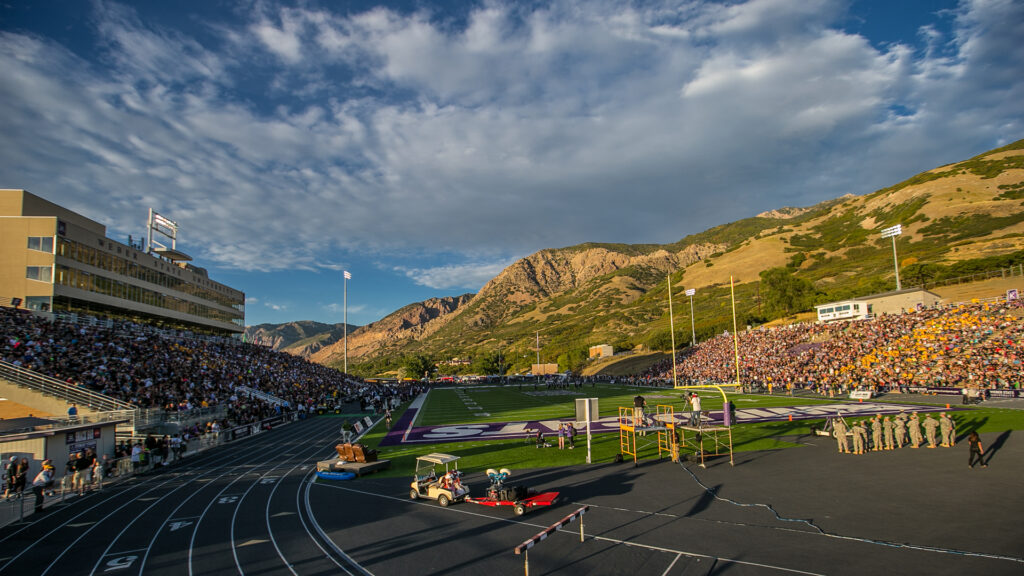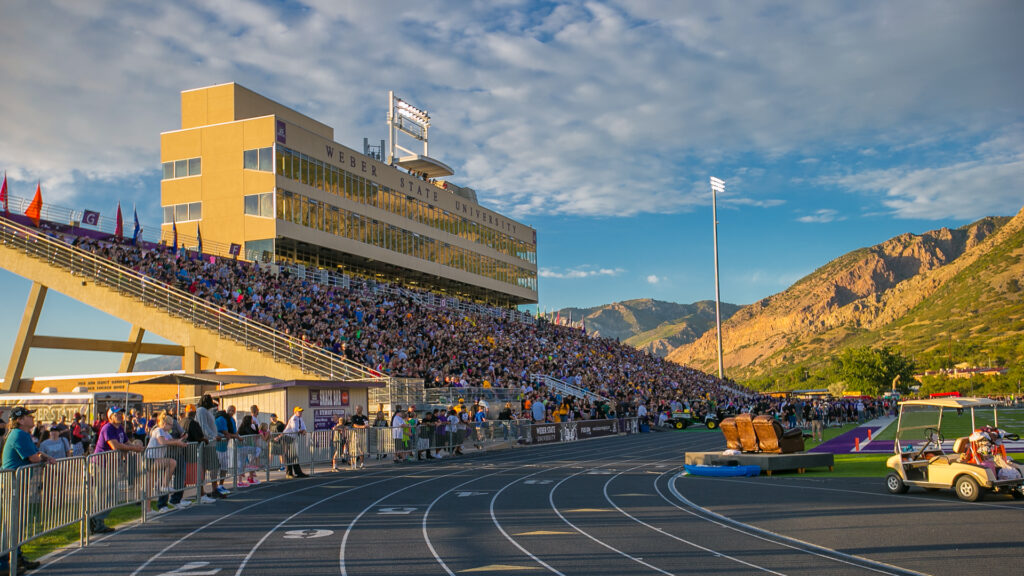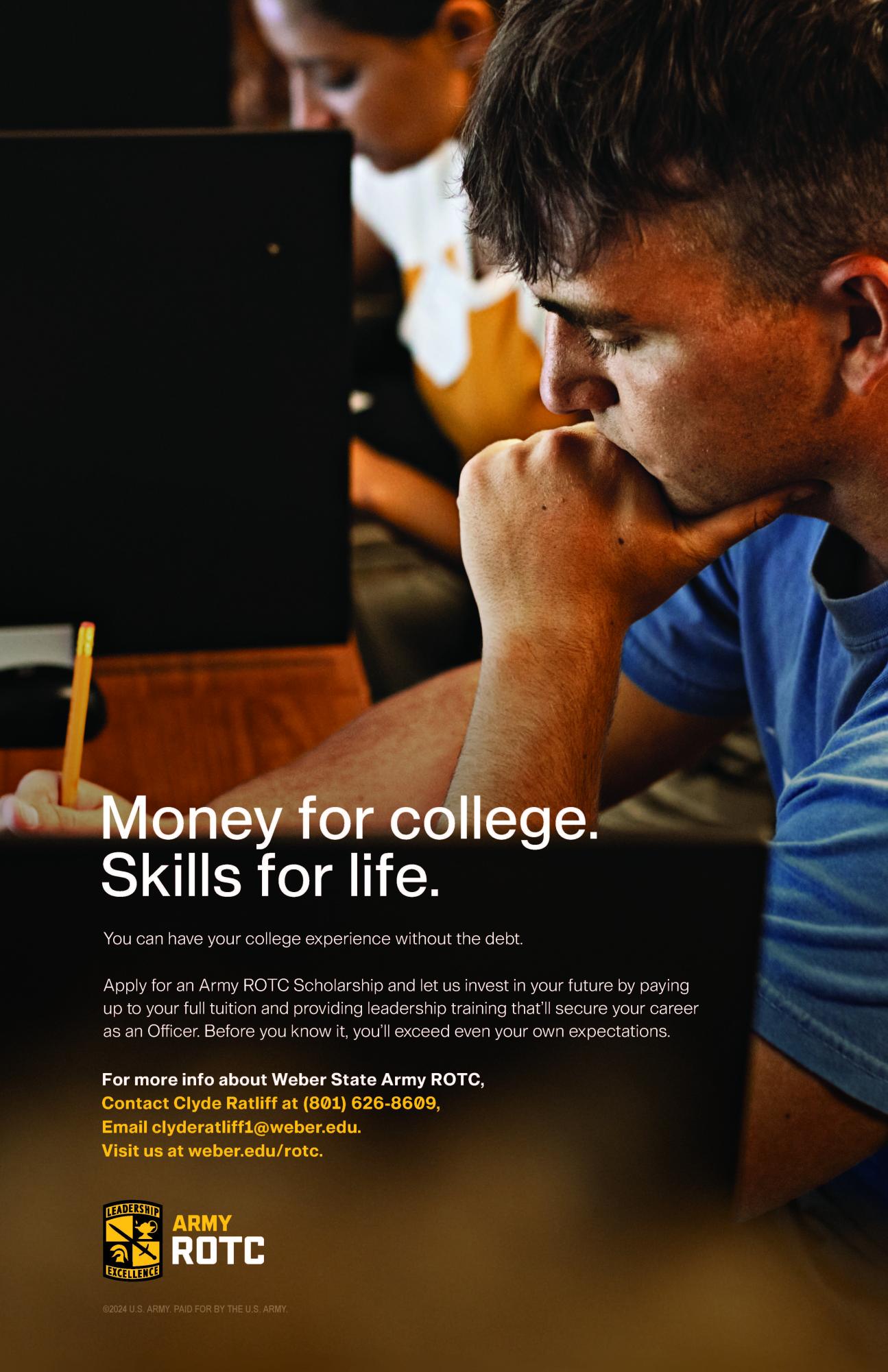Inside the big business of college sports
April 18, 2022
The NCAA and its athletic events generate nearly one billion dollars annually. To put that into perspective, prominent clothing company Vans generated just over $475 million in revenue last year, according to their 2021 annual fiscal report.

“It’s somewhere around $800 million that the NCAA gains in revenue,” associate athletic director and senior women’s administrator at Weber State University Meagan Thunell said. “They turn around and distribute over $600 million of that to the participating institutions.”
More than half of the revenue generated by the tournaments and championships is kicked back to Division I programs, leaving a much smaller sum for Division II and Division III programs.
According to official financial reports, $100 million is used to organize the March Madness tournament, college football playoffs and other NCAA athletic events.
This method of funding is why the NCAA is a hotspot for dynasties. Schools like Duke University, University of North Carolina and University of California, Los Angeles have won multiple NCAA basketball championships while schools like the University of Alabama, Louisiana State University and the University of Southern California have dominated college football in the fall.
“The rich stay rich,” Thunell said. “The programs that advance in the tournament, they get more of the distribution.”
While the rich are paid to stay powerful, smaller schools are left scrambling for funding to keep themselves as competitive as possible.
During the NCAA’s March Madness tournaments, each Division I conference receives an automatic bid. A way to make sure that smaller programs receive NCAA funding and have a chance to compete in front of a national audience, some schools have to win their conference’s championship to compete in the tournament.
“Because of that equal conference distribution, every conference that has an automatic bid gets one share,” Thunell said. “If we then have a team win in round one and advance to round two, which has happened a few times in Big Sky Conference history, then you get another share because you’re playing a second game.”
Automatic bids help mid-major programs like Weber State receive funding for athletic events, scholarships, facilities and equipment.
“Like most other mid-major schools, we don’t get the majority of our funding from that because we don’t have teams that advance into the tournament,” Thunell said. “But, it is money that makes a big difference.”
Thunell says that the pandemic made 2020 a rough year for funding, as no March Madness tournament was held for the first time since 1938.
“During COVID, instead of distributing $600 million, they distributed less than $300 million,” Thunell said. “That was a huge impact on schools.”
A large portion of the wealth generated by the NCAA is distributed to major institutions and student athletes through scholarships.
Thunell said the structure might change, however, with talks of expanding the college football playoffs along with rumors that schools in the power-five conferences are going to break away from the rest of the Division I schools to form a super league.
The power-five conferences consist of the Big Ten, the Big 12, the Atlantic Coast, the Pac-12 and Southeastern Conference. If these conferences break away, it’s speculated their schools will receive even more NCAA funding. Although it’s possible that funds will trickle down to players, the impact the move could have on student athletes, staff, fans and communities isn’t known yet.
Until recently, student athletes were not allowed to make money from their name, image or likeness, also known as NIL, without punitive action from the NCAA. On July 1, 2021, the NCAA changed its policy to allow student athletes these privileges.
“The NCAA landscape is certainly changing right now with the name, image and likeness opportunities and the fact that there’s not any national law on that,” Thunell said.

Athletes at title-winning schools like Alabama have benefitted the most from these opportunities. During a press conference at a Texas high school coaches association event, Alabama’s head coach Nick Saban discussed the earning potential of certain Crimson Tide players, specifically star quarterback Bryce Young.
“Our quarterback already has approached ungodly numbers,” Saban said. “It’s almost seven figures. And it’s like, the guy hasn’t even played [professionally] yet.”
In an effort to help student athletes find and make NIL deals, Big Sky conference commissioner Tom Wistrcill announced a partnership with INFLCR in July of 2021. INFLCR is an Alabama-based software company that helps student athletes develop their personal brand and connect with sponsors without violating NCAA guidelines.
“The Big Sky Conference is thrilled to partner with the industry leader in this dynamic and evolving space,” Wistrcill said at a press conference after the announcement.
During that press conference, INFLCR founder and CEO Jim Cavale said that the software would help generate revenue for student athletes in the Big Sky.
“The Big Sky is innovative and strategic in its approach to this new NIL era by supplying the INFLCR verified product solution to each of its 11-member institutions department-wide,” Cavale said.
While Weber State athletes may not garner the same national attention and financial support as athletes from schools in the power-five conferences, they can still make local NIL deals to develop their brand.
“The opportunity for them to be able to have an endorsement, however minor, with a local establishment, whether it’s a restaurant or whatever else. Those are exciting opportunities for student athletes,” Thunell said. “People have said over the years that many of the high-level athletes have been exploited for their talent. It’s hard not to look at the facts and tend to agree with that.”
Although not every athlete will sign an NIL deal, the NCAA has organized student athlete advisory committees at every level to influence the decision-making process.
“It’s comprised of student athletes that are basically in a leadership position to help make decisions and to help guide their own athletics departments,” Thunell said.
Thunell also said that the NCAA is “asking for the votes on legislation and really wanting to give more voice to the student athlete.”
To further support student athletes, the NCAA donates over $69 million to the Student Athlete Opportunity Fund annually, helping athletes who are struggling financially. A student athlete’s medical expenses are often paid for by the fund to make up for what insurance doesn’t cover. A similar program is the Special Assistance Fund, which received just almost $19 million last year.
In June 2020, the NCAA created the Academic Performance Fund, a program for all Division I schools that incentivizes academic excellence. In 2021, the amount allocated for the Academic Performance Fund was over $30 million.
NCAA funding has historically only favored schools in the power-five conferences. However, student-athlete funds and NIL opportunities have provided ways for Division I athletes from other schools to receive the recognition they deserve.


